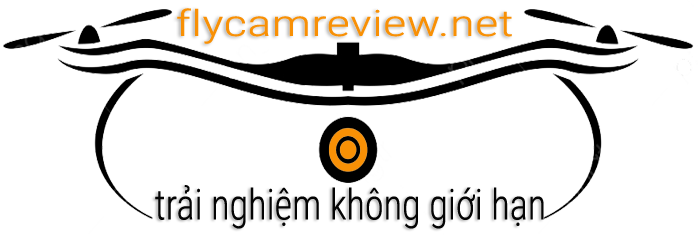The DJI Mavic Air 2 series has revolutionized aerial photography and videography, offering professional-grade capabilities in compact, portable packages. This article explores the best Mavic Air 2 models available in 2024, highlighting their features, performance, and value for both enthusiasts and professionals.
Overview of current flycam DJI Mavic Air 2 trends
The drone industry has seen remarkable advancements in recent years, with DJI leading the charge in consumer and prosumer markets. The Mavic Air 2 line has been at the forefront of this innovation, consistently pushing the boundaries of what’s possible in a compact drone.

One of the most significant trends we’re seeing is the integration of more advanced camera systems. The latest Mavic Air 2 models now boast impressive 48MP cameras capable of capturing stunning 4K video and even 8K hyperlapse footage. This leap in image quality has made these drones increasingly popular among professional photographers and videographers who require top-notch results without lugging around bulky equipment.
Another notable trend is the emphasis on flight time and range. Newer models in the Mavic Air 2 family are offering extended flight times, with some capable of staying airborne for over 30 minutes on a single charge. This, coupled with improved transmission systems like OcuSync 2.0, allows pilots to capture more footage and explore further without worrying about losing connection or running out of battery.

Advancing AI and autonomous flight features
The integration of artificial intelligence in Mavic Air 2 drones has taken a significant leap forward. Advanced tracking systems like ActiveTrack 3.0 have become more sophisticated, allowing for smoother and more reliable subject tracking. This technology has opened up new creative possibilities for content creators, enabling complex shots that would have been difficult or impossible to achieve manually.
Enhanced safety and compliance features
With the increasing popularity of drones, there’s been a parallel increase in regulations surrounding their use. DJI has responded by incorporating more advanced safety features and compliance measures into their Mavic Air 2 models. Features like AirSense, which alerts pilots to nearby aircraft, and geofencing capabilities help ensure responsible flying. The inclusion of FAA Remote ID compliance in newer models also demonstrates DJI’s commitment to meeting evolving regulatory requirements.
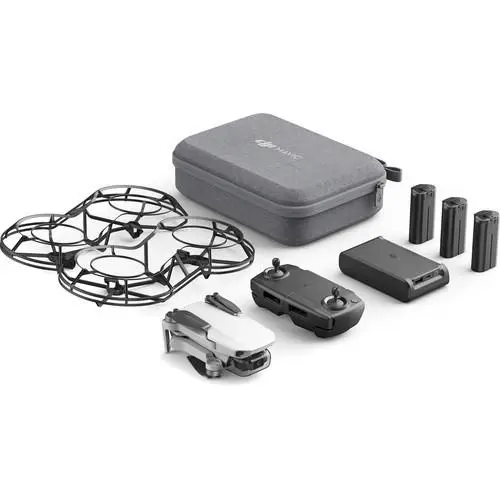
Improved portability and ease of use
While the Mavic Air 2 series has always been known for its portability, recent models have pushed this even further. The introduction of ultra-compact drones like the Mini series, which weigh less than 250 grams, has made it easier than ever for travelers and adventurers to bring along a capable drone without adding significant weight to their gear.
Importance of choosing the right flycam DJI Mavic Air 2
Selecting the appropriate Mavic Air 2 model is crucial for ensuring you get the most out of your investment and achieve your aerial imaging goals. There are several key factors to consider when making your choice.
Camera quality and capabilities
The camera is arguably the most important feature of any Mavic Air 2 drone. When evaluating camera quality, consider:
- Sensor size and resolution: Larger sensors and higher resolutions generally produce better image quality, especially in challenging lighting conditions.
- Video capabilities: Look at the maximum resolution and frame rates supported. 4K at 60fps has become a standard feature in many models.
- Special shooting modes: Features like HDR video, slow-motion, and hyperlapse can greatly expand your creative options.

For professional users, the ability to capture in high bit-rates or shoot in flat color profiles for easier post-processing can be crucial. Meanwhile, hobbyists might prioritize ease of use and automatic shooting modes that produce great results straight out of the camera.
Flight performance and range
The flight characteristics of your chosen Mavic Air 2 model will significantly impact your flying experience and the types of shots you can achieve. Key considerations include:
- Flight time: Longer flight times mean more opportunities to get the perfect shot without having to land and change batteries.
- Maximum range: While you should always maintain visual line of sight with your drone, a longer range can be beneficial for certain types of landscape photography or filmmaking.
- Wind resistance: Better wind resistance allows for smoother footage and more reliable performance in challenging conditions.
Remember that real-world performance can vary based on conditions, so it’s wise to read user reviews and experiences alongside the manufacturer’s specifications.

Portability and design
The portability of your Mavic Air 2 can greatly affect how often you actually use it. Consider:
- Folded size and weight: If you plan to travel frequently with your drone, a more compact model might be preferable.
- Durability: Look for models with robust construction that can withstand the rigors of frequent use and transportation.
- Noise levels: Quieter drones are less likely to draw unwanted attention and can be more pleasant to fly in natural settings.
Intelligent features and ease of use
Modern Mavic Air 2 drones come packed with smart features that can enhance your flying experience:
- Obstacle avoidance: More advanced obstacle detection and avoidance systems can provide peace of mind, especially for less experienced pilots.
- Autonomous flight modes: Features like ActiveTrack, QuickShots, and waypoint navigation can help you capture complex shots with ease.
- Return-to-home functionality: This safety feature ensures your drone can find its way back to you if it loses connection or runs low on battery.
The ease of use of these features can vary between models, so consider your technical comfort level when making your choice.
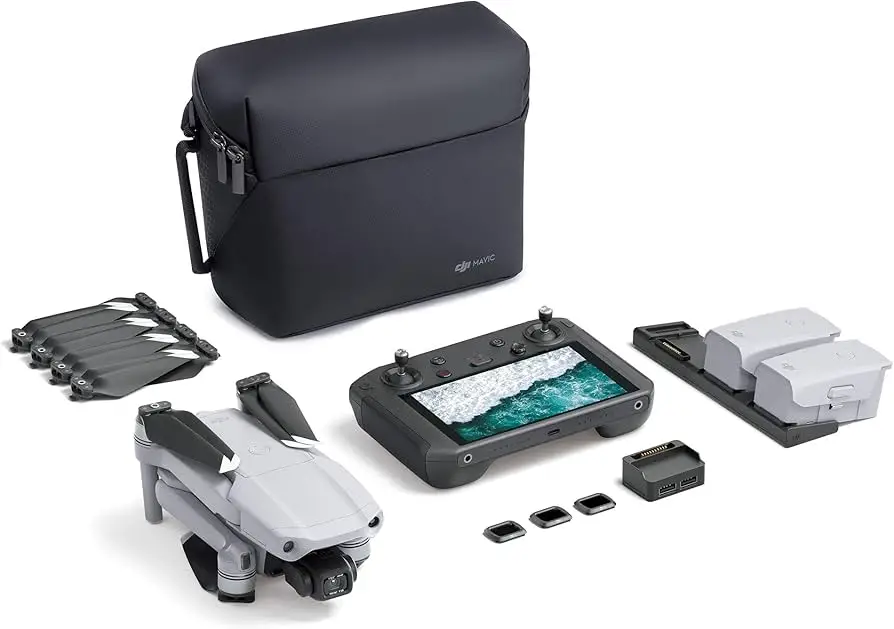
Price and value
While it’s tempting to go for the most feature-packed model, it’s important to consider your budget and intended use:
- Professional users might justify spending more on advanced features and image quality.
- Hobbyists and beginners might find better value in more affordable models that still offer good performance.
- Consider the total cost of ownership, including extra batteries, ND filters, and other accessories you might need.
By carefully weighing these factors, you can choose a flycam DJI Mavic Air 2 that perfectly suits your needs and helps you capture the aerial footage of your dreams.
Flycam DJI Mavic 2 Pro – Ultimate Aerial Photography and Videography Guide
Top Picks Table
| Product Name | Price | Buy Now |
|---|---|---|
| DJI Mavic Air 2 Fly More Combo | $970.00 | Buy Now |
| DJI Air 3 Fly More Combo | $1,549.00 | Buy Now |
| DJI Mavic Mini Combo | $285.00 | Buy Now |
| Mavic Air 2 Aircraft Only | $499.99 | Buy Now |
| DJI Mini 2 SE Fly More Combo | $429.00 | Buy Now |
1. DJI Mavic Air 2 Fly More Combo
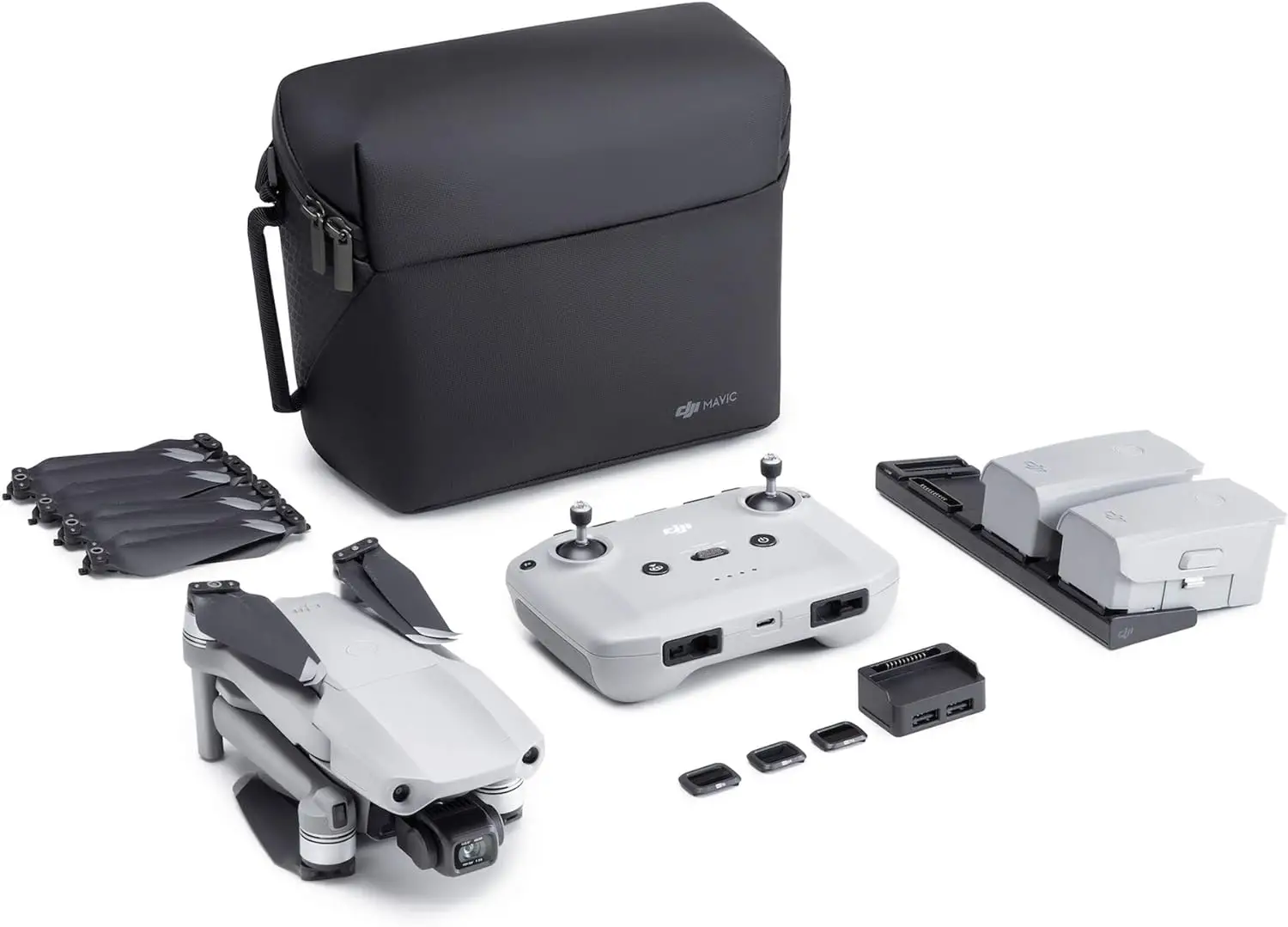
As someone who’s been flying drones for years, I have to say that the DJI Mavic Air 2 Fly More Combo is a game-changer. From the moment I unboxed it, I knew this wasn’t just another drone – it’s a flying camera that pushes the boundaries of what’s possible in aerial photography and videography.
The first thing that struck me was the build quality. It’s solid yet lightweight, and the folding design makes it incredibly portable. I’ve taken this drone on hikes and travels, and it barely takes up any space in my backpack. But don’t let its compact size fool you – this little powerhouse packs a serious punch when it comes to performance.
The camera is where this drone really shines. With a 48MP 1/2″ CMOS sensor, the image quality is simply stunning. I’ve captured landscapes and cityscapes that look like they could be straight out of a professional photography portfolio. The ability to shoot 4K video at 60fps is a dream come true for any videographer, and the 8K hyperlapse feature has allowed me to create some truly breathtaking time-lapse sequences.
One of my favorite features is the ActiveTrack 3.0. I’ve used it to follow mountain bikers through dense forests and track cars on winding roads, and the results have been consistently impressive. The drone’s ability to predict movement and navigate around obstacles while keeping the subject in frame is nothing short of miraculous.
The OcuSync 2.0 transmission system is another standout feature. I’ve flown this drone in areas where I’ve lost connection with other models, but the Mavic Air 2 maintains a rock-solid link at impressive distances. Combined with the 34-minute flight time, it gives me the confidence to explore and capture footage in ways I never could before.
| Pros | Cons |
|---|---|
| Exceptional 48MP camera | Higher price point |
| 4K/60fps video capability | Learning curve for advanced features |
| 8K hyperlapse | Larger size compared to Mini series |
| 34-minute flight time | May require registration depending on location |
| ActiveTrack 3.0 | Wind resistance could be better |
| OcuSync 2.0 transmission | |
| Compact and portable design |
2. DJI Air 3 Fly More Combo

The DJI Air 3 Fly More Combo takes everything I loved about the Mavic Air 2 and cranks it up to eleven. As soon as I got my hands on this drone, I knew I was dealing with a serious piece of kit that would elevate my aerial photography and videography to new heights.
The standout feature of the Air 3 is undoubtedly its dual primary cameras. This innovative setup has completely changed the way I approach aerial shooting. Having the ability to switch between different focal lengths mid-flight has opened up a world of creative possibilities. I’ve found myself capturing wide, sweeping landscape shots and then seamlessly transitioning to more intimate, close-up details without needing to change altitude or position.
The image quality from both cameras is exceptional. The 48MP photos are rich in detail and color, rivaling what you’d expect from a high-end DSLR. But it’s in video mode where this drone really flexes its muscles. The 4K footage is buttery smooth thanks to the advanced stabilization, and the ability to shoot in D-Log M color profile gives me incredible flexibility in post-production.
One of the most impressive aspects of the Air 3 is its extended flight time. With up to 46 minutes of airtime on a single battery, and three batteries included in the Fly More Combo, I’ve been able to capture entire sunsets without needing to land. This extended flight time, combined with the 20km max video transmission range, has allowed me to explore and capture footage from perspectives I never thought possible.
The inclusion of the DJI RC 2 controller is a game-changer. The built-in screen is bright and responsive, eliminating the need to use my phone as a monitor. This not only streamlines the flying experience but also means I can keep my phone free for other tasks or communication while I’m out in the field.
| Pros | Cons |
|---|---|
| Dual primary cameras | Higher price point |
| Exceptional 4K video quality | Larger size may be less portable |
| Extended 46-minute flight time | Complex features may overwhelm beginners |
| 20km max video transmission | Requires more careful planning for longer flights |
| Included DJI RC 2 controller | May be overkill for casual users |
| FAA Remote ID compliant | |
| Advanced obstacle avoidance |
3. DJI Mavic Mini Combo
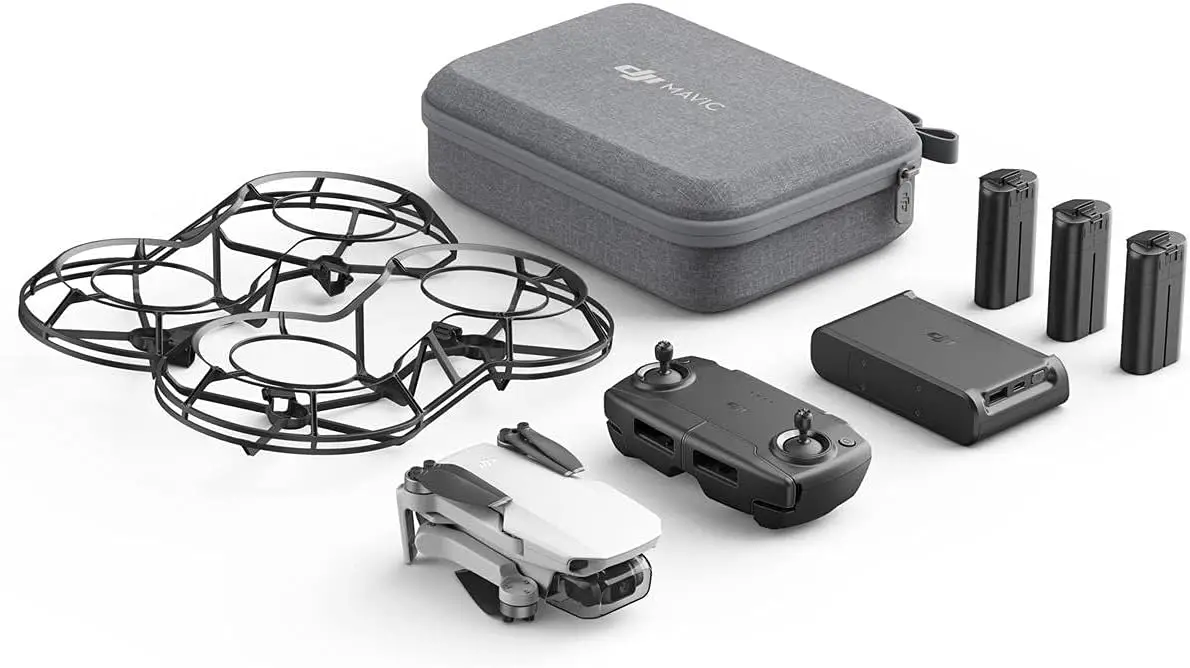
The DJI Mavic Mini Combo is a testament to the old adage that good things come in small packages. When I first held this tiny drone in my hand, I was skeptical about its capabilities. But after spending some time with it, I’ve come to appreciate it as a marvel of miniaturization and a perfect entry point for those new to the world of aerial photography.
Weighing in at just under 250 grams, the Mavic Mini is so light that in many regions, it doesn’t require registration. This makes it an ideal choice for travelers or those who want to avoid the hassle of paperwork. Despite its small size, it feels surprisingly sturdy and well-built. The folding design is ingenious, allowing it to fit easily into a jacket pocket or small bag.
The camera, while not as high-spec as its larger siblings, is still capable of producing impressive results. The 2.7K video looks crisp and detailed, especially when viewed on mobile devices or shared on social media. The 12MP still photos have a good dynamic range and color accuracy. I’ve been particularly impressed with how well it handles challenging lighting conditions, like sunsets or partially cloudy days.
One of the standout features of the Mavic Mini is its 30-minute flight time. For such a small drone, this is remarkable and allows for extended shooting sessions without frequent battery swaps. The included controller is comfortable to hold and provides a stable connection to the drone, though I did notice some limitations in range compared to larger DJI models.
The GPS-assisted flight features work well, providing stable hovering and accurate return-to-home functionality. While it lacks some of the more advanced obstacle avoidance systems found in pricier models, I found that its small size and agility made it easier to navigate in tight spaces.
| Pros | Cons |
|---|---|
| Ultra-lightweight (under 250g) | Lower resolution camera compared to larger models |
| No registration required in many regions | Limited wind resistance |
| Impressive 30-minute flight time | Lacks advanced obstacle avoidance |
| Compact and highly portable | No 4K video capability |
| Good image quality for its size | Limited range compared to larger DJI drones |
| Easy to fly for beginners | |
| Affordable price point |
4. Mavic Air 2 Aircraft Only

As someone who’s had the misfortune of crashing a drone before, I was thrilled to discoverthe Mavic Air 2 Aircraft Only option. This product is a fantastic solution for those who may have experienced an unfortunate incident with their original drone, as it allows you to replace the aircraft without having to repurchase a whole new kit.
Upon receiving the aircraft, I was impressed by how closely it matched my original model in terms of build quality and performance. The sleek gray finish and compact design make it easy to transport, and it fits perfectly with the existing accessories I had from my previous purchase. Setting it up was a breeze, and within minutes, I was ready to take to the skies again.
The performance of the Mavic Air 2 is just as impressive as I remembered. With its 48MP camera and 4K video capabilities, the footage produced is stunningly clear and vibrant. The 34-minute flight time is more than sufficient for capturing lengthy shots or creative sequences without worrying about battery life. I also appreciate the convenience of ActiveTrack 3.0, which allows for smooth tracking of moving subjects, whether it’s a person or vehicle.
Even though this is just the aircraft, I didn’t miss having the remote controller or other accessories because I still had them from my previous purchase. However, keep in mind that if you’re new to drones, you’ll need to invest in those components separately. The price point of $499.99 is reasonable considering the top-notch technology packed into this drone.
All in all, the Mavic Air 2 Aircraft only option is a smart investment for anyone who wants to upgrade or replace their existing Mavic Air 2 without starting from scratch. It’s an excellent combination of performance and value that will surely satisfy both enthusiasts and casual users alike.
| Pros | Cons |
|---|---|
| Maintains high quality performance | No remote controller included |
| Easy to set up and use | Requires prior ownership of accessories |
| Excellent camera specs (48MP, 4K video) | Higher cost compared to new combos |
| Same great flight time (34 min) | Limited warranty for replacement units |
| Lightweight and portable | Not suitable for first-time buyers |
5. DJI Mini 2 SE Fly More Combo

The DJI Mini 2 SE Fly More Combo truly caters to those looking for a compact yet powerful drone experience. As someone who enjoys outdoor adventures, I found this mini drone to be an indispensable companion during my travels. Its lightweight design makes it super easy to carry along, and its under 249g weight means I don’t have to worry about registration in many countries.
With three batteries included in the combo, I’ve been able to log up to 93 minutes of total flight time! This extended airtime has allowed me to explore vast landscapes and capture breathtaking shots that would typically require multiple batteries in bulkier models. The new QHD video capability provides stunning clarity, making my travel videos look incredibly professional.
I also appreciate the Auto Return to Home feature, which adds an extra layer of security for beginners like myself. On days when I’m flying solo, knowing that I can effortlessly bring the drone back home if I lose sight of it eases my worries. The QuickShots feature is another highlight; it simplifies capturing cinematic shots with just a few taps on the screen.
Although it’s not as high-spec as some of the more expensive models, the Mini 2 SE performs admirably for what it offers. I’ve had no issues with connectivity or stability, and the GPS functionality ensures a smooth flight experience even in slightly windy conditions. The image quality is impressive for a mini drone, and it handles different lighting situations quite well.
Overall, the DJI Mini 2 SE Fly More Combo is perfect for beginners and seasoned flyers alike. Its balance of portability, ease of use, and functionality makes it a strong contender in the drone market. Whether you’re capturing memories on a trip or just exploring your local area, this little powerhouse won’t disappoint.
| Pros | Cons |
|---|---|
| Extremely lightweight and portable | Camera resolution is lower than some competitors |
| Extended flight time with multiple batteries | Limited advanced features |
| Auto Return to Home for safety | Slightly less wind-resistant than larger models |
| Great image quality for a mini drone | May lack options for advanced users |
| User-friendly interface for beginners | No 4K video capability |
Conclusion
In conclusion, DJI offers a diverse range of drones catering to various user needs and skill levels. From the advanced DJI Air 3 Fly More Combo with its dual cameras and extended flight time to the compact and beginner-friendly DJI Mini 2 SE, there’s something for everyone. Each model showcases exceptional performance, innovative technology, and impressive imaging capabilities, making them worthwhile investments for both hobbyists and professionals. Ultimately, your choice will depend on your specific requirements, budget, and intended use—but rest assured, any of these selections will elevate your aerial photography experience.

